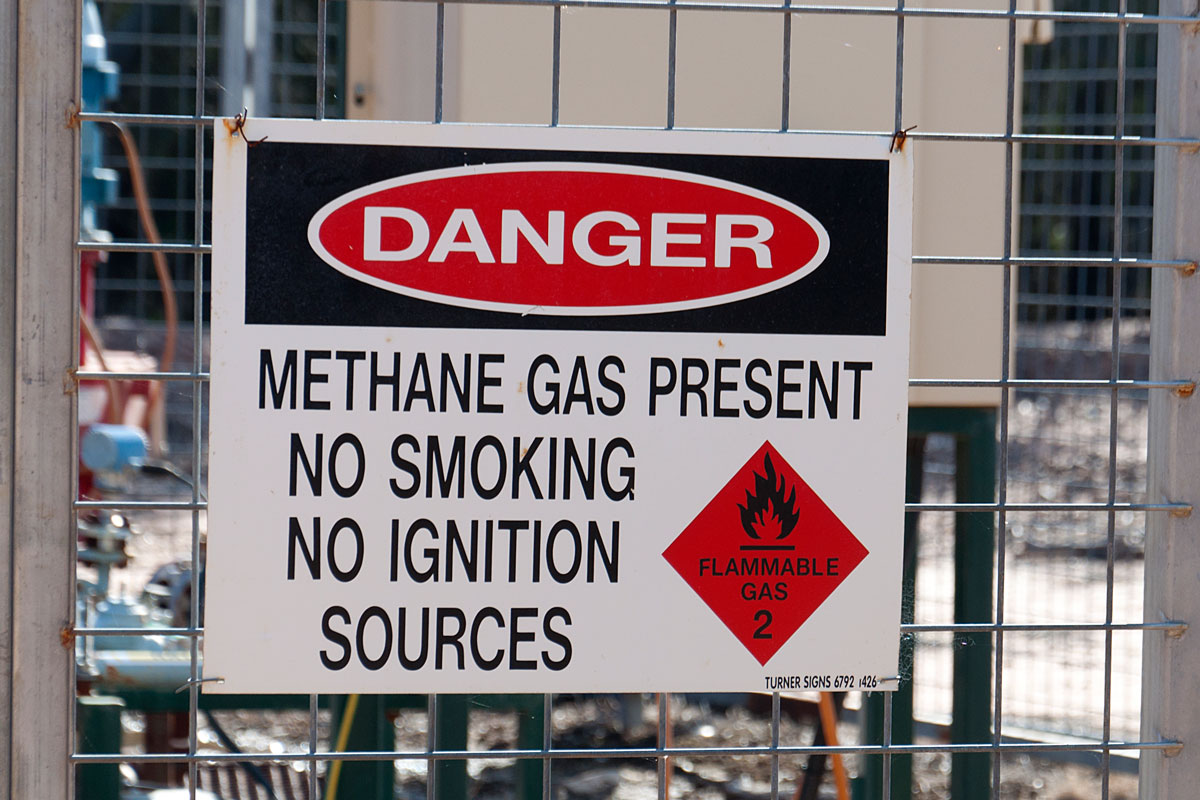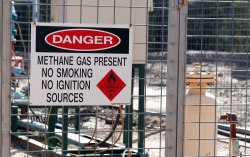Send your question to Umbra!
Q. Dear Umbra,
Why are companies so determined to violate the geological structure of the planet in search of methane when almost everything that is alive or decaying produces it naturally? Would it not be cheaper and safer and cooler to just use what is already being produced limitlessly?
Anusha
Melbourne, Australia
A. Dearest Anusha,
Listen, I don’t want to freak you out. But you know how everyone talks about carbon this, carbon that when it comes to climate change? Methane is in some ways far creepier. It’s the second-most abundant greenhouse gas, and the U.S. EPA says it can have 20 times the climate impact of carbon over time. It’s like the cackling villain hiding in the wings.
Except! Methane also happens to be a cleaner-burning fuel source than coal or oil. How delightfully complicated. Now we have to picture it wearing that Phantom of the Opera mask in the wings.
The primary component of natural gas, methane is produced when living things rot without oxygen around. This is why it is often found deep underground or under the sea. It is also produced by wetlands, digestive processes (yes, we’re talking cow burps and termites [PDF]), and landfills. Picture any dark, dank, sort of slimy place, and chances are good there’s methane around.
The fact that this natural gas is abundant, affordable, and cleaner-burning makes the world keen on it. Back in the old days, we captured it by drilling fairly straightforward wells, through which the gas was happy to travel. Now that we’ve grabbed all that low-hanging gas fruit (note to self: another potential band name), we’ve looked around and realized there’s lots of gas locked away in coalbeds, in shale formations, and even under permafrost. We’re talking at least 7,000 trillion cubic feet, probably much more. Being the innovative and greedy creatures we are, we’ve devised methods such as fracking and horizontal drilling that force the gas out from previously inaccessible places. Then methane can at long last do the work it was made for: powering our homes and businesses. We have kettles to boil, people!
But this “unconventional extraction” of methane, as it’s known, is not without downsides. Coalbed extraction and fracking create mega-amounts of salty, often toxic wastewater. Fracking seems to trigger earthquakes in non-earthquake-prone areas. And methane leaks during extraction and transmission have some people wondering if the risks outweigh the benefits. Because, as previously mentioned: Natural gas as a fuel source is relatively clean; natural gas as a wanderer in the atmosphere not so much.
So why does the energy industry go to all this trouble instead of, say, using a Ziploc bag to catch those cow burps? Three reasons: Quantity, quality, and q … efficiency.
First, as I mentioned, there’s a lot of gas down in those dark, dank spots. Second, it’s the good stuff: While gas from landfills, for instance, is typically 40 to 60 percent methane, the gas in coalbeds is closer to 95 percent methane. This means it can be piped directly into service, and has a higher heat value — 1,000 Btu/cubic foot compared to 600 Btu/cf for the landfill gases, according to the University of Missouri Extension. That seems to be desirable.
The other reason energy companies force their way underground — and even under sea and ice — is because it’s more efficient than trying to capture methane from wetlands or other natural sources. As Jeff Chanton of Florida State University explained to me, “Wetlands are a broad, diffuse methane source. They are globally important, but they are low emitters per square mile.” They are also, of course, often protected from industrial intrusions. At least ideally. And do you want to be the one who pioneers the project that captures methane from termites? No, me neither.
So we continue, as you put it, violating the geological structure of the earth. As it happens, there are many operations that convert methane from landfills and farms into energy, and these deserve kudos: They protect our atmosphere while making good use of a gas that would otherwise go to waste. Unfortunately, these projects are limited in their scope, due to factors including cost, scale, and technology. So unless and until our thirst for natural gas subsides, we seem to be royally fracked.
Unconventionally,
Umbra




